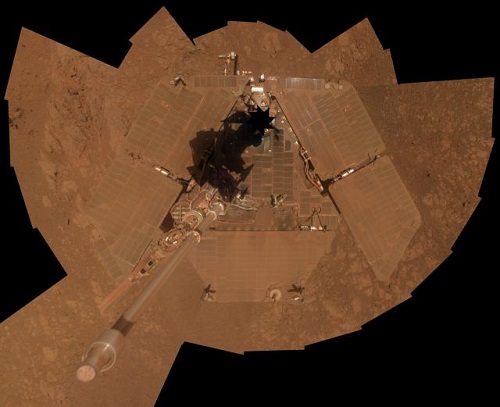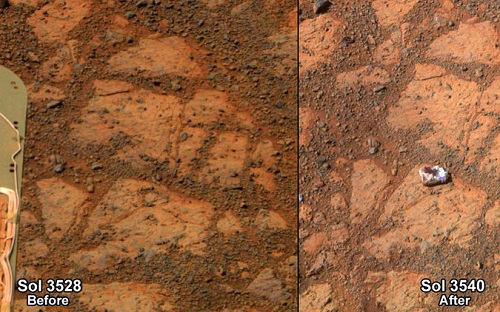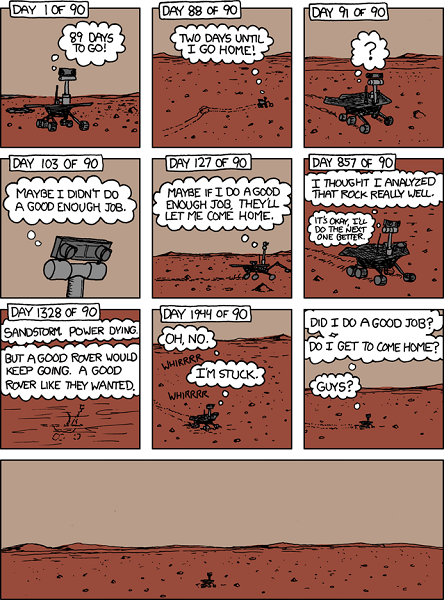In terms of robotic-rovers, Opportunity deserves the highest commendation for originality. The robot landed on Martian soil back in January 24th, 2004, a whole eight and a half years before Curiosity, and has spent the last 3,653 days sweeping the Martian surface. That’s a 3563 days longer than its intended 90-day mission. To celebrate its 10th anniversary on Mars and remind everyone on Earth that it’s still there, Opportunity sent us back a selfie.

“Sup fools? You’ll thought I was dead, huh?”
Opportunity is an artist in the world of rovers, if there ever was such a thing, with many discoveries attributed to its name including:
1. rocks and iron-rich spheres proving that not only did Mars have water, but it was once drinkable.
2. The first meteorite found outside of Earth.
3. A better understanding of the Martian atmosphere through a temperature profile.
The machine was expected to lose power completely after driving a single kilometer due dust and debris accumulating on its solar. Yet to NASA’s surprise, it has trekked 38.7 kilometers, or approximately 24 miles, and still remains in relatively good operational health despite a lame wheel, two scientific instruments malfunctioning, and a stiffened robotic arm.
Opportunity’s project manager over at NASA, Dr. John L. Callas, told the New York Times that corrective actions can be taken to repair the robot if they are within NASA’s budget. It currently costs the organization $14,000,000 per year to run Opportunity, so it’s a matter of deciding if there is still a value behind supporting this machine when its comparatively younger brother, Curiosity, just landed on August 6, 2012.

New findings
Opportunity’s latest findings were discovered on Thursday, January 8th, when a rock suddenly appeared in an image taken two weeks after a prior image with no rock. NASA’s Dr. Steven W. Squyres hypothesizes that the stone was dragged by Opportunity’s lame right wheel, which has not turned for years, and fell into the frame from the upward position where the robot was standing. The stone was thought to have remained unturned for billions of years; its underside is like nothing Opportunity has ever seen, and reveals a composition made up of sulfur, magnesium and manganese.
A final mission
The next mission in store for Opportunity could be the robot’s last stand. Readings transmitted from the Mars Reconnaissance Orbiter point Opportunity in the direction of a pile of rocks situated on the rim of the 22.5 kilometer (14-mile) Endeavour Crater. NASA geologists stated in Friday’s issue of the journal Science that the stones appear to be made contain a clay mineral made in aqueous environments. It will take one to two years before Opportunity can even reach these rocks and if that’s even possible.

Original author: xkcd
Advertisement
Learn more about Electronic Products Magazine





